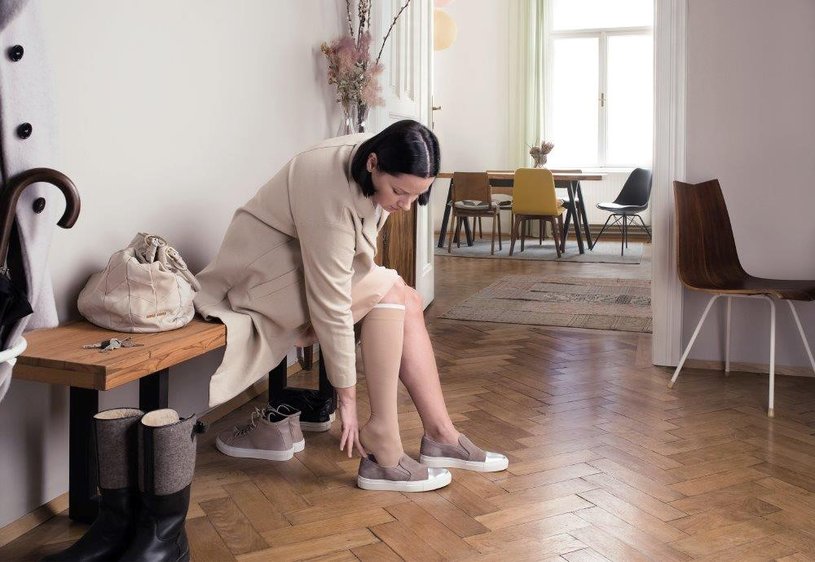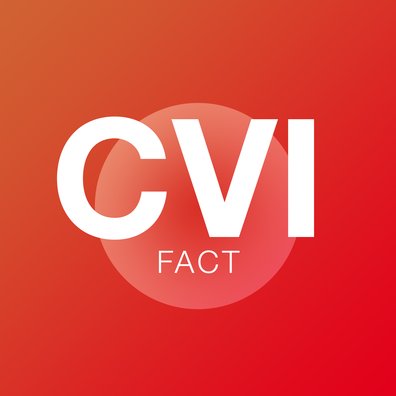Venous Insufficiency Treatment
Being Diagnosed with Chronic Venous Insufficiency
It's only natural to feel concerned if you've been diagnosed with Chronic Venous Insufficiency (CVI), but there are a wide range of treatment options available for you, depending on the stage of the condition. We’ve outlined a few of ways to manage your condition and live a full and happy life. Always consult with your care provider for more information or before beginning any treatment plan.

Compression therapy can help alleviate the symptoms of Chronic Venous Insufficiency. Your care provider will show you how to apply short-stretch bandages, compression garments to the swollen area. The type of product you are prescribed will depend on the level of your swelling and your ability to put on and take off the garment. You will need to wear this from the moment you get up until you go to bed at night, for compression to work at its best.
While that might sound restrictive at first, it will soon become part of your daily routine and you’ll start enjoying the benefits of greater mobility and comfort.
How does compression work?
Compression garments increase the pressure on the skin and underlying structures to counteract the effects of gravity, helping to prevent blood pooling at the bottom of the legs. Done regularly, it improves the removal of blood and lymph from the limb, reduces swelling, and promotes healing of any leg ulcers.
A pneumatic compression calf pump maybe recommended in conjunction with compression therapy, for all stages of CVI. This stimulates the flow of lymph in the right direction and maximizes the effects of compression. Ask your care provider for more information on how this works.
In early stage Chronic Venous Insufficiency in the calf and/or ankles, you may be treated with compression therapy alone, using short-stretch bandages or compression garments to reduce the symptoms. But if the swelling spreads to the foot and toes, you may be advised to have Manual Lymphatic Drainage (MLD). Your care provider will use their hands to massage the affected area and encourage lymph to drain normally. You can learn a simplified version of this technique to do yourself at home.
If you have Chronic Venous Insufficiency, it’s important to get blood pumping around your body as much as possible. Take regular walks and avoid sitting or standing for long periods of time. Any cardiovascular exercise, such as brisk walking or jogging, that gets your heart pumping is especially beneficial when you have CVI. When you’re laying down or sitting, try elevating your legs. Pointing your toes up and down repeatedly will encourage blood to flow back to the heart.
If you have swelling caused by a build-up of fluid, it's important to look after your skin as any injury or illness can make the swelling worse.
- Examine your skin every night, after removing your compression garments
- Cleanse the swollen area with plain soap or cleansing solution and water
- Apply a moisturizing lotion to your skin, to keep it hydrated. Avoid lotion with high alcohol content as these can dry out the skin
- Avoid using a fragranced soap or lotion as these can irritate the skin
- Make sure the area is fully dry before reapplying any compression garments
Skin problems
Chronic Venous Insufficiency can also affect your skin in other ways. You may experience discoloration, skin rash, irritation, itching or blisters. Fungal infections around the toes are also very common.
If you have advanced CVI, you may also develop a bacterial skin infection called Cellulitis, thickening of the skin known as Hyperkeratosis, or Venous Leg Ulcers. You may also notice some darkening or discoloration of the lower leg, ankle or foot. This is known as Hemosiderin Deposits.
Some skin problems, such as fungal infections, can be treated with over-the-counter medication or antifungal medications. Others will require more specialist support. Always talk to your care provider if you notice any skin changes.
Non-surgical Treatment
Spider veins and varicose veins can be treated with Scelerotherapy. This involves a physician injecting a special solution directly into the vein, to make it shrink and disappear. Endovenous Thermal Ablation, or laser therapy, is another non-surgical procedure that can be used to close off the problem veins.
Surgery
Surgery may be considered in severe cases of CVI, where other treatments have been unsuccessful. Some options include Ligation & Stripping, Microincision, Ambulatory Phlebectomy and Vein Bypass. Ask your care provider if you need further information on any of these surgeries.
Support Groups
Support groups can help provide other forms of comfort and relief that are equally as important. You can find support groups in your area at the National Lymphoedema Network's website. Visit www.lymphnet.org for more information.
Or listed below are several further support services that you might find useful.
Nutrition
While there is no specific diet for Chronic Venous Insufficiency, it makes sense to try to stick to a healthy, balanced diet.
Eat a diet rich in fruit, vegetables, whole grains, low-fat dairy, lean meats, fish, poultry, nuts and beans
Limit your intake of sugars and fats


